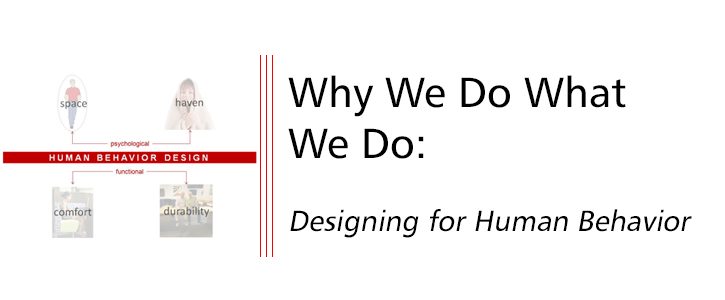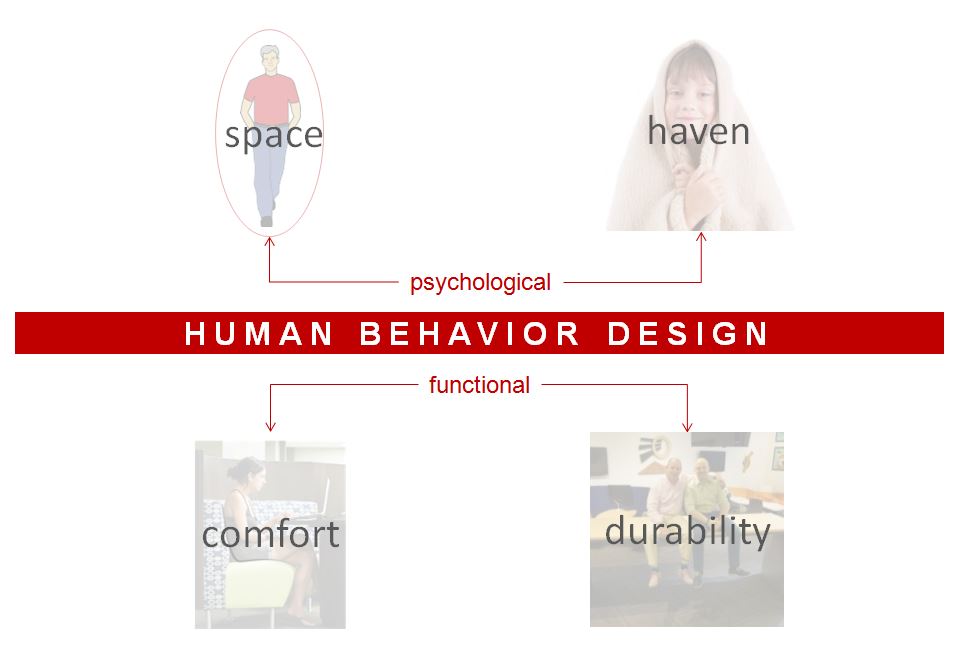
It’s pretty much human nature to consider furniture for its intended purpose.
Will it be used in a lounge? Maybe it will be placed in an area dedicated to individual quiet study? Should it be modern, traditional, or something else?
This approach is nothing new, and rightfully so—it’s pretty logical!
But let me pose something different. What if you instead thought about your space as being occupied by humans with automated behaviors and work patterns? Or in other words, understanding how the humans in your space will be moving, learning, and interacting, and then selecting furniture designs that optimize those behaviors?
Thinking of users this way in your design process exposes four inherent needs for both the humans using your space and the furniture you’ll provide them. We call these inherent needs The Four Elements of Human Behavior.

We group The Four Elements of Human Behavior down into two separate categories: The Psychological and the Functional. After decades of observing the Psychological aspect of human behavior in public spaces, two human needs consistently come to the forefront: the need for “Personal Space” and the need for “Haven”. For the Functional aspect of human behavior in public spaces, the need for “Comfort” and “Durability” are always the most important. More about these later; for now we’ll explore one specific question – Where do these needs stem from and how do we assess their importance for library spaces and library furniture?
For now, let’s briefly go back to the bomb we dropped a few paragraphs up – about choosing human behavior over basic purpose in selecting furniture.
Often times a furniture design captures the eye – it could be the style, a unique characteristic, or even its basic purpose (i.e. one thinks they need a chair, so they buy a chair). Over time, it’s very common to realize that what was purchased isn’t the most effective item for use in the space.
When letting human behaviors influence furniture selection, the odds of selecting the right pieces greatly increase, which ends up making happier patrons (to say nothing of saving costs on unforeseen renovations/purchases).
In the next blog, we’ll continue our short exploration into Designing for Human Behavior with a look into our prehistoric ancestors and what helped them survive before central air in the summertime.
